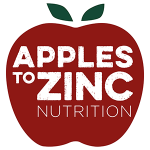Sugar vs Artificial Sweetener – Are you confused?
“Sugar is bad” – that’s what we are constantly told by the media, slimming groups, dentists and GP’s. Even the government’s ‘Changes for Life’ campaign tells us to make sugar swaps. Their advice?…… switch to low sugar alternatives. According to the campaign we should:
- Try giving the kids small amounts of diluted sugar free squash, cordial or fruit juice
- If you take sugar in tea or coffee, try cutting down or swapping to sweeteners instead
- Instead of ice cream, try: Lower fat yoghurt – make sure it doesn’t contain added sugar, sugar free jelly or lower fat rice pudding – check the label for sugar too
- For all the family swapping to water, milk, or diet or sugar free drinks can really make a difference.
Whilst that sounds sensible the reality is that the advice is not perhaps as beneficial to us as we think. Switching from sugar to foods and drinks packed with chemical sweeteners has its own issues.
In the news only last week the headlines were “Sweeteners ‘could cause obesity’ scientists warn” (http://www.telegraph.co.uk/health/healthnews/11101477/Sweeteners-could-cause-obesity-scientists-warn.html). According to the latest research the artificial sweeteners in diet drinks and food could cause obesity and diabetes.
Artificial sweeteners are thought to alter the way we process our foods by making changes to the bacteria that live in our digestive system. These bacteria, which are normally beneficial to us, may then secrete substances that increase our risks of obesity and diabetes. Other research suggests that the sweeteners trigger the reward centre in our brains and make us crave the calorific sweet foods it was expecting and can lead to overeating and weight gain.
Much more research into this is needed but, for me, the message is clear – to reduce our risks of certain conditions we should not simply switch from sugar to artificial sugar but aim to reduce it from our diet or seek natural alternatives.
Apples to Zinc top 10 tips:
- Drink water, and lots of it! If you really need some flavour try adding slices of oranges, lemons or limes to a large jug and keep it in the fridge
- Cut back on sugars in tea or coffee or use alternative sweeteners that are natural and not currently linked to disease. These include xylitol, stevia and even coconut sugar
- Add protein to high sugar foods to slow down the release of glucose into your blood stream. Have a few almonds or brazil nuts with your fruit or some seeds in your yoghurt
- Make your own ice cream – it’s simple but delicious (see recipe below)
- Add your own chopped fruit to natural yoghurt for a sweet dessert
- Avoid high sugar cereals – go for porridge oats or a brand like shredded wheat which has no sugar added
- Be prepared with low sugar snacks. If you find yourself hungry with nothing to hand you may only be able to find a vending machine or corner shop. Carry mixed nuts, seeds and dried fruit, veggie sticks with hummus, or for convenience something like an almond bounce ball (available in Waitrose or health food shops) or peanut 9bar (available from most supermarkets)
- Limit sweeter tasting vegetables such as parsnips, carrots and sweetcorn and fill up on your greens – broccoli, spinach, kale, asparagus and cabbages
- If you really need chocolate chose dark chocolate (minimum 70% cocoa). It contains less sugar than milk alternatives, is packed with nutrients to provide health benefits and because of its rich taste we generally eat less of it
- Lastly – de-stress, exercise and get enough sleep. All of these factors can impact on our energy levels. With low energy your body is much more likely to crave sugary foods to give it a “pick me up”. By helping to boost your energy levels through good lifestyle choices you can reduce your cravings for the white stuff!
If you would like more information about this blog or feel that you would benefit from a one to one consultation about your health and how changing the foods you eat may help please contact me on info@applestozinc.co.uk or 07554 626765
Apples to Zinc Nutritional Therapy is based in Maidenhead, Berkshire
Banana Ice cream (recipe by Gywneth Paltrow)
Makes: about 500ml / Preparation time: 15 minutes plus freezing time
Ingredients:
4 ripe bananas, peeled and sliced into thin rounds
85g finely chopped roasted almonds
2 tsp plus 2 tbsp good-quality maple syrup, divided
A pinch of coarse sea salt
125ml unsweetened almond milk
1 tsp pure vanilla extract
Method
- Freeze the banana slices in a single layer on a tray or plate lined with grease proof paper. Once the slices are frozen, use them immediately or keep frozen in a zip-top plastic bag or airtight container for up to a month.
- In a bowl, combine the almonds, two teaspoons of syrup and salt.
- Combine the frozen banana slices, the almond milk, the remaining two tablespoons of the maple syrup, and the vanilla in a food processor and pulse until the mixture is the texture of soft-serve ice cream, scraping down the sides as necessary. Don’t worry if the mixture is not totally smooth at first – once the bananas start to break down and defrost in the food processor, they’ll give in and the “ice cream” will take shape quickly.
- Spoon the banana ice cream into bowls immediately and sprinkle each serving with a bit of the almond mixture.
